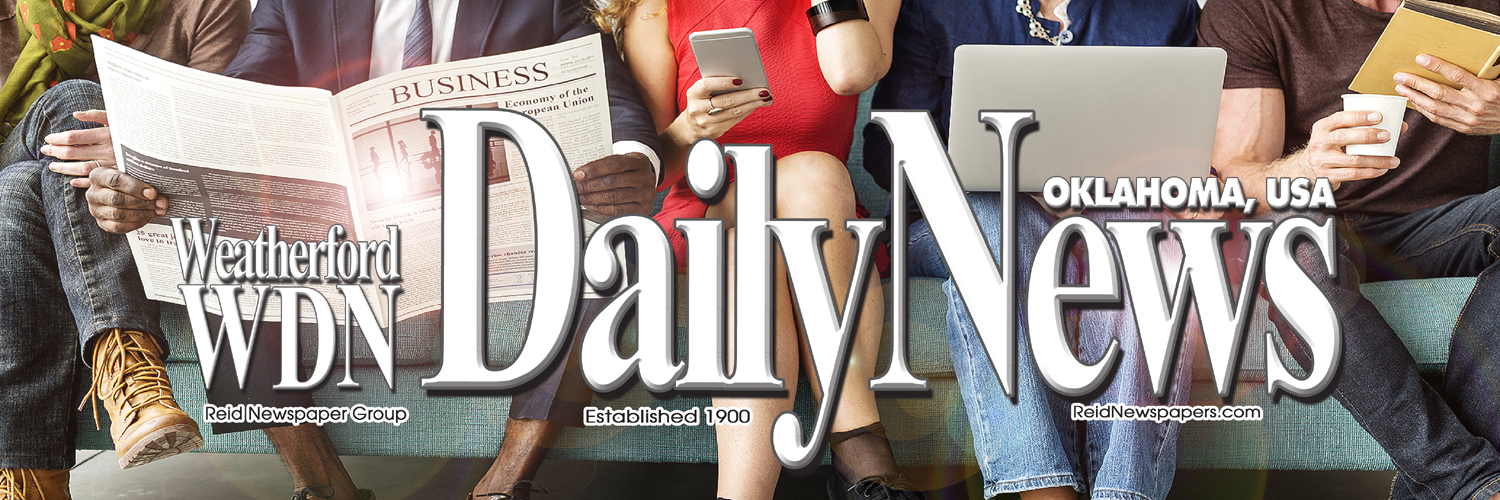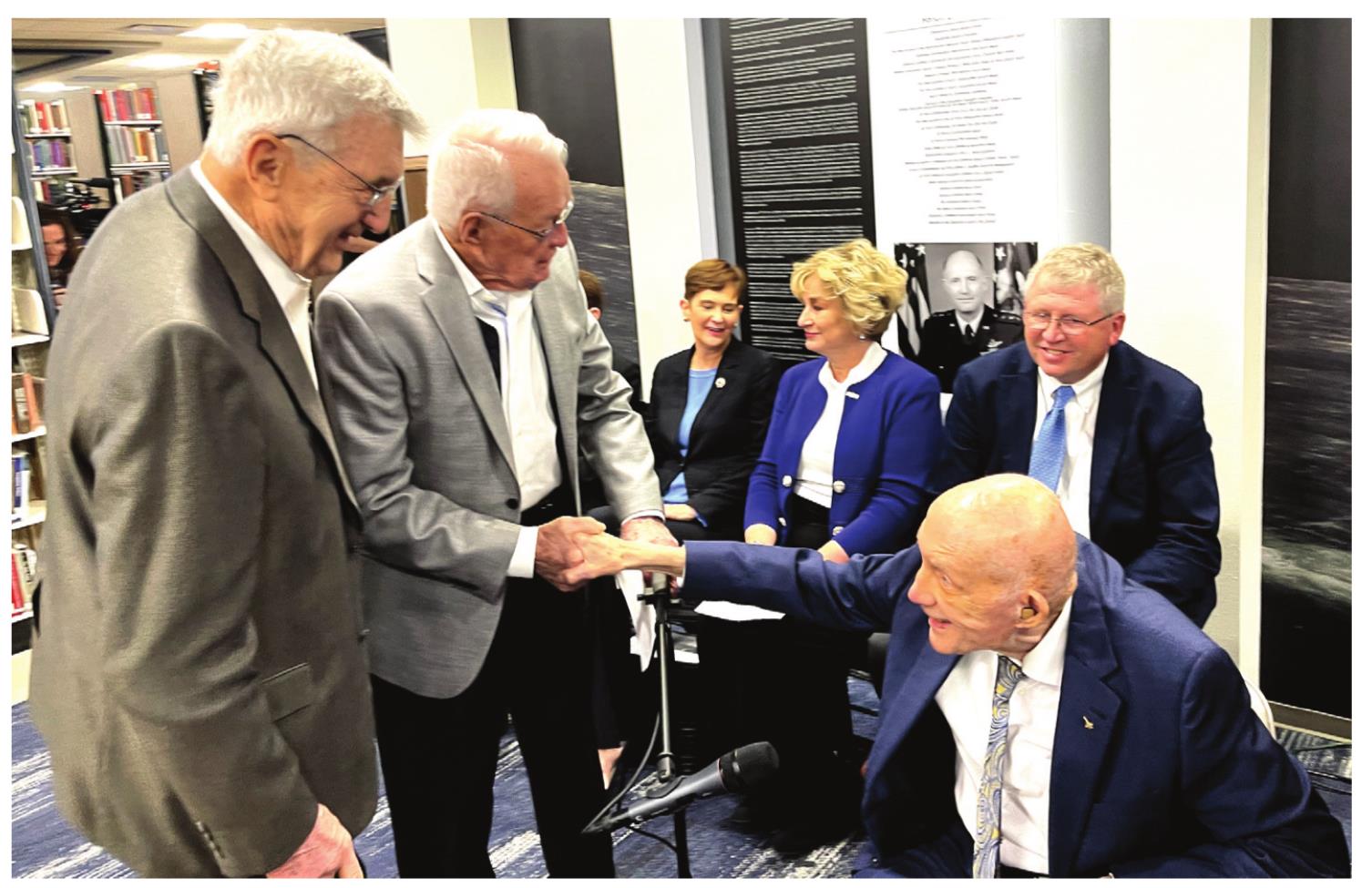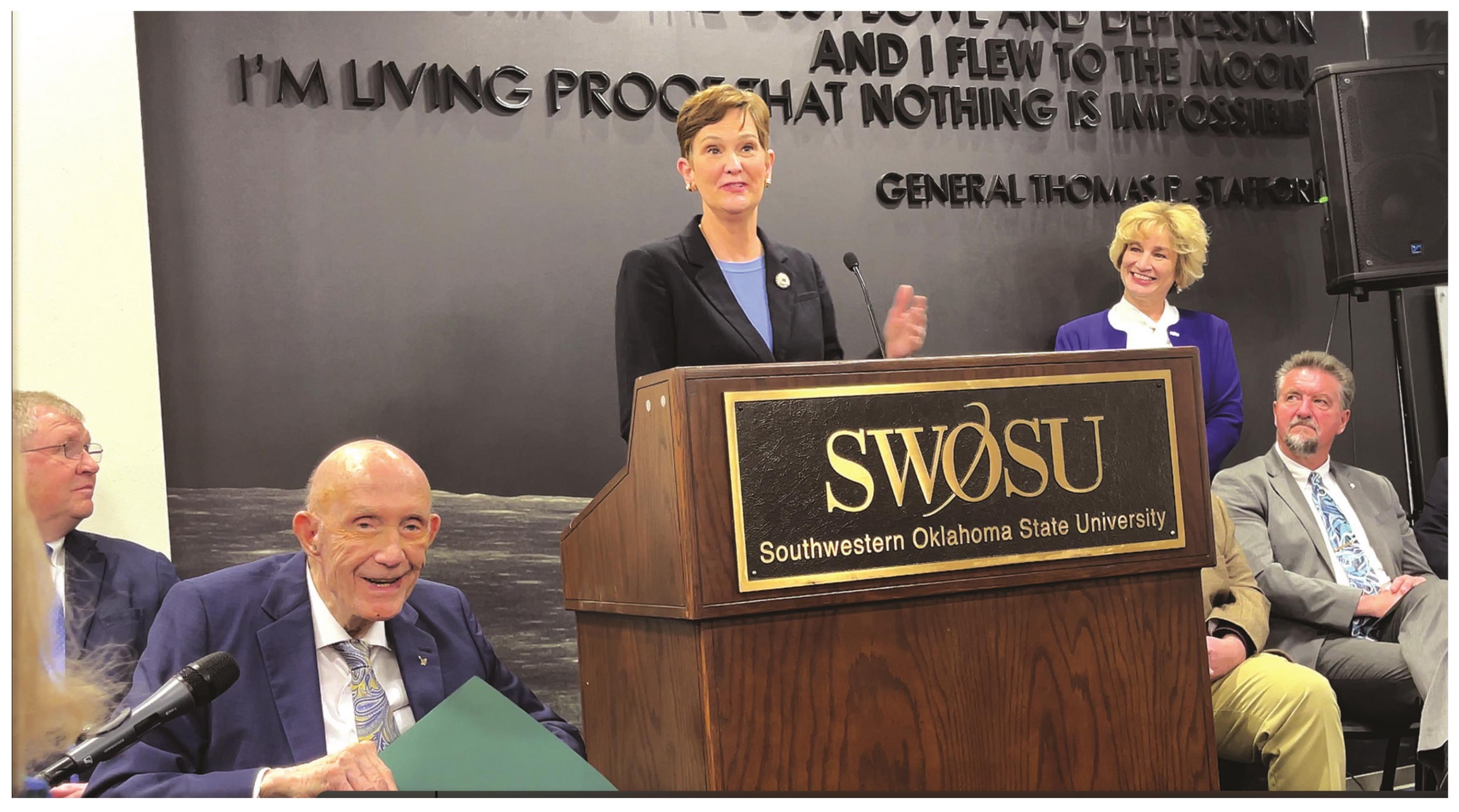Gen. Thomas P. Stafford came to Weatherford Friday to see the opening of his archives at SWOSU and addresed the crowd with colorful details.
“I am so honored to be here and to see these archives,” Stafford said. “Life goes by so fast and it is hard to believe I grew up in this small town. Weatherford is a great town and I always tell Mayor Mike Brown how great of a job he is doing with Weatherford. I also am so proud SWOSU provided this beautiful facility and archives for so many of my congressional testimonies and my writings.”
When Stafford was five years old, said he always looked up at the sky and noticed the big airplanes flying and knew then, he wanted to fly.
“I have always wanted to fly, but also wanted to fly higher and faster,” Stafford said. “Well, I did go faster. On the way back from the moon, we had enough fuel and pressure to add an extra 1,000 feet to our velocity. We made it back from the moon in 42 hours, which is the all-time record. We flew at a speed of 27,791 miles per hour.”
Stafford’s dreams were big and seemed far-fetched, as he grew up in Weatherford during the dust bowl and the great depression. Stafford defied all odds and flew to the moon. He has said many times, “I am living proof that nothing is impossible.”
Stafford’s mother came to Oklahoma in a covered wagon in 1901. When Stafford went to the moon, his mother watched on color television.
“I do not believe this increment of change in one’s lifetime will ever exist again,” Stafford said. “To come to Oklahoma in a wagon, then 68 years later, be able to see her only child fly to the moon on live color television? Who can match that increment of change in such a short amount of time?”
Before he ever went into space, Stafford went into the United States Naval Academy in 1952. Stafford knew failure at college was not an option and was at the top of his class in mathematics and science. Stafford wanted to go to Korea, since the Korean War was fought from 1950-1953, but Stafford never got to go. After graduating, he then went on to be a second lieutenant in the United States Air Force.
He finished his classes and became a test pilot instructor at Edwards Air Force Base in California. Stafford flew an F-86 airplane and there is one of these planes at the Stafford Art and Space Museum.
“I like teaching people when you think outside of the box, you have to use common sense,” Stafford said.
Stafford trained to fly into space and he was accepted into NASA in 1962. He was one of the few Americans who had the opportunity to fly airplanes in NASA.
Stafford also established the Stafford Endowment at SWOSU in 1992 which at the time was the largest single gift ever made to the university.
The endowment continues to provide a unique experiential learning program for SWOSU’s prestigious Stafford Scholars, more than 165 of which have been designated to date.
“From 1992-1994, I was the largest donor for SWOSU, even though he never attended SWOSU,” Stafford said. “I received an horary masters from SWOSU, which is great. I believe SWOSU has a great future in front of them and President Lovell is doing a fantastic job. I am so proud of all the scholars and I was so happy to be at SWOSU and be honored.”



